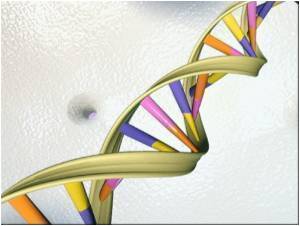Researchers at Washington University School of Medicine in St. Louis have found that a protein - which helps build the brain in infants and children - may aid efforts to restore damage

"In MS patients, myelin repair occurs inconsistently for reasons that aren't clear," says senior author Robyn Klein, MD, PhD, associate professor of medicine and of neurobiology. "Understanding the nature of that problem is a priority because when myelin isn't repaired, the chances that an MS flare-up will inflict lasting harm seem to increase."
The findings appear online in The Proceedings of the National Academy of Sciences.
Mouse models typically mimic MS symptoms by causing chronic immune cell infiltration in the brain, but, according to Klein, the ongoing immune damage caused by the cells makes it difficult for researchers to focus on what the brain does to repair myelin.
For the study, Klein and first author and postdoctoral fellow Jigisha Patel, PhD, used a non-inflammatory model that involves giving mice food containing cuprizone, a compound that causes the death of cells that form myelin in the central nervous system. After six weeks, these cells, known as oligodendrocytes, are dead, and the corpus callosum, a structure that connects the left and right hemispheres of the brain, has lost its myelin. If cuprizone is then removed from the mouse diet, new cells migrate to the area that restore the myelin by becoming mature oligodendrocytes.
Klein's investigations began with the processes triggered by dying oligodendrocytes while mice are still on the cuprizone diet. The dying cells activate other support cells in the brain, causing them to express inflammatory factors.
Advertisement
"This was a surprise, because the main thing CXCR4 has been known for is its role in forming the brain, not healing the brain," Klein says. "But we did know that injury increases the number of brain cells that make CXCR4, so it wasn't an unreasonable place to look."
Advertisement
When scientists blocked CXCR4 from becoming activated or reduced cells' ability to make it, the mice were unable to restore myelin. Neural precursor cells stayed in the ventricle and grew in number but did not move to the corpus callosum to begin repairs.
"Apparently the neural precursor cells have to stop proliferating before they can migrate, and CXCR4 plays a role in this change," Klein says. "CXCR4 also seems to be essential to the cells' ability to develop into mature oligodendrocytes and form myelin."
Source-ANI














